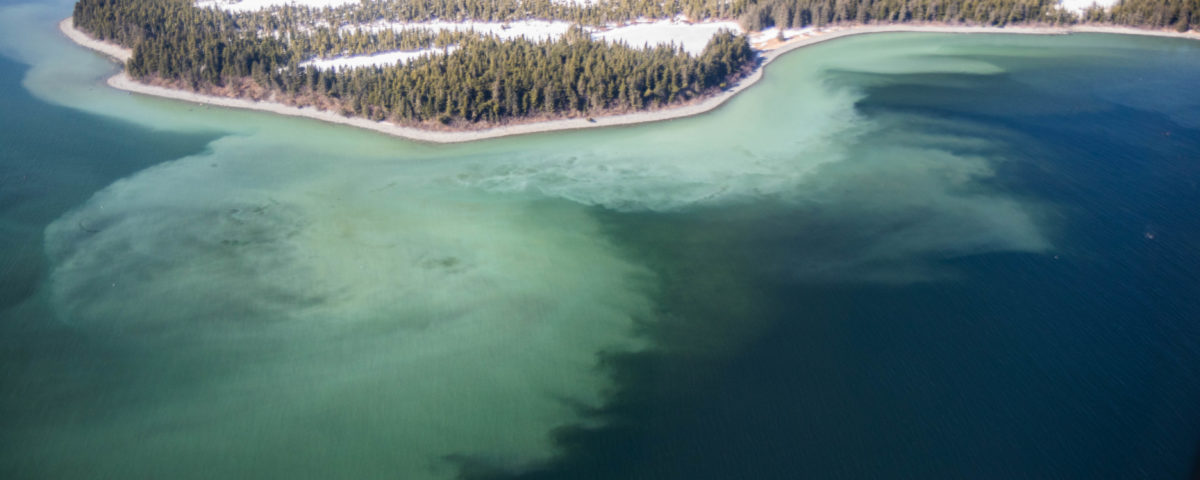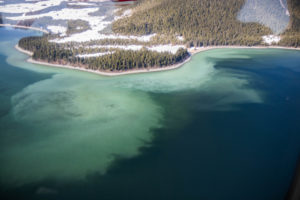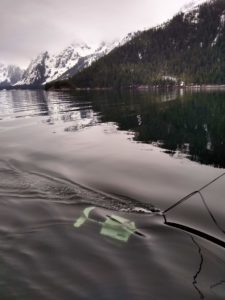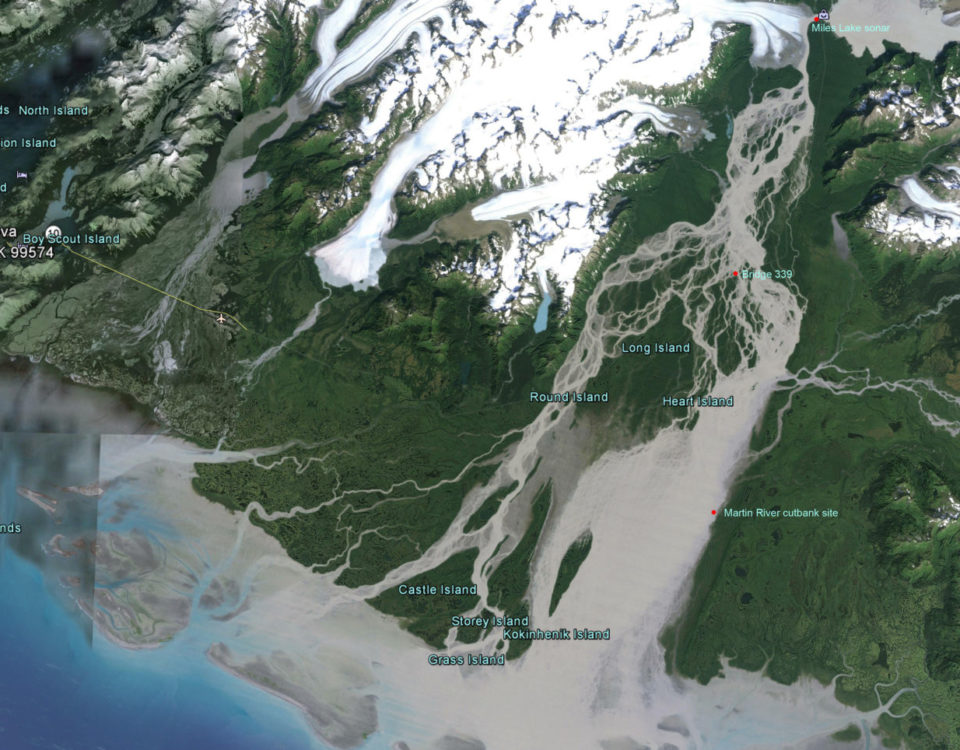High Herring Abundance in Prince William Sound

Ideal conditions for a large year class, but don’t get your hopes up…yet.
By Lauren Bien, May 6, 2020
PWSSC Research Ecologist, Pete Rand, returned to Cordova in early April with reports of larger herring aggregations in Prince William Sound during an acoustic survey research cruise. The acoustic surveys have been occurring in the Sound since 1993 and Rand has been running them since 2016. Rand noted a remarkable difference in the abundance of fish in the Port Gravina area, “we saw roughly around 12,000 metric tons. In recent years we’ve been getting less than 5,000 metric tons- so double or triple what we’ve seen in recent years.” While Rand’s crew usually observes the largest number of herring in the Port Gravina area, the abundance of fish was not the only noticeable difference. Rand commented, “we also saw large aggregations near Canoe Pass on Hawkins island and there were aggregations that were larger than a kilometer at both of these sites. We saw fish over a much larger distance and more concentrated than we’ve seen in the recent past. It was quite dramatic.”

Herring spawn near Port Gravina in early April. Photo: Shane Shepard, ADF&G
So why are we seeing more fish in Prince William Sound this year? Scott Pegau, the program manager for the Herring Research and Monitoring Program, has a few ideas. In order to get the full picture, we have to look back to 2016. Pegau explains, “the 2016 herring year class was phenomenal throughout the entire Gulf of Alaska; Sitka reported the largest recruitment class on record.” The conditions in the Gulf that year may have led to such a large recruitment. There was plentiful food of the right size, warmer water, and an abundance of available nursery habitat. According to Pegau, “there was a large amount of zooplankton, and particularly the smaller zooplankton, at the time when the younger fish needed it.” Smaller zooplankton species thrived in the warmer water of 2016, which was at the tail end of ‘The Blob.’ Pegau also added that warmer water “allows [herring] to grow a little bit faster,” making them more successful in reaching adulthood. Back to present day 2020, and the successful fish of 2016 are ready to spawn, which is why Rand and others are seeing such an abundance of fish.
Another noticeable difference this year is the apparent lack of predators. Rand says they normally see sea lions and a dozen or more whales while surveying; this year they saw one whale and the few sea lion rafts observed near herring schools were not actively pursuing fish.

The acoustic array deployed during Rand’s research cruise. Photo: Pete Rand
Does all of this mean we will see a huge increase in the herring population in Prince William Sound? Not necessarily, says Pegau. While herring are able to rebound their population relatively quickly, this large spawning event could use up all the nursery habitat until these fish fully recruit out of it, which would mean low numbers in the next few years. Additionally, if we don’t see another large spawning event before the 2020 fish start to die, the population will decrease. When asked if this could result in a herring fishery in Prince William Sound in the near future, Pegau wasn’t super optimistic, but isn’t completely ruling it out either. “This is the first step…If we got another year class like this one in the next four years and if we got moderate recruitment between them, we could be there in five years, but that’s about as fast as we’d be able to do it.” Ultimately, and just as Pegau put it, “all depends on what the conditions are like out there.”




